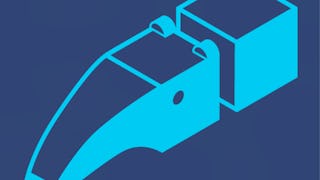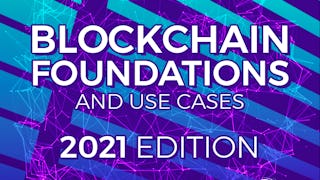This first course of the Blockchain specialization provides a broad overview of the essential concepts of blockchain technology – by initially exploring the Bitcoin protocol followed by the Ethereum protocol – to lay the foundation necessary for developing applications and programming. You will be equipped with the knowledge needed to create nodes on your personal Ethereum blockchain, create accounts, unlock accounts, mine, transact, transfer Ethers, and check balances.


Enjoy unlimited growth with a year of Coursera Plus for $199 (regularly $399). Save now.

Blockchain Basics
This course is part of Blockchain Specialization

Instructor: Bina Ramamurthy
278,120 already enrolled
Included with
(7,753 reviews)
Recommended experience
What you'll learn
A learner will be able to recognize foundational concepts of blockchain, and apply these program concepts on the blockchain.
Skills you'll gain
Details to know

Add to your LinkedIn profile
20 assignments
See how employees at top companies are mastering in-demand skills

Build your subject-matter expertise
- Learn new concepts from industry experts
- Gain a foundational understanding of a subject or tool
- Develop job-relevant skills with hands-on projects
- Earn a shareable career certificate

There are 4 modules in this course
We will introduce and define blockchain, explain the structure and operational aspects of Bitcoin blockchain, and compare different types of blockchains.
What's included
4 videos6 readings5 assignments
We will discuss the innovation of the Ethereum blockchain, review its protocol, and explore the payment model for code execution.
What's included
4 videos5 readings5 assignments
We will discuss the concept of asymmetric key encryption, define the concept of hashing, and explain techniques that use algorithms to manage the integrity of transactions and blocks in blockchain.
What's included
4 videos5 readings5 assignments
We will define elements of trust in blockchain and discuss the Consensus protocol.
What's included
4 videos5 readings5 assignments1 programming assignment
Earn a career certificate
Add this credential to your LinkedIn profile, resume, or CV. Share it on social media and in your performance review.
Instructor

Explore more from Software Development
 Status: Free Trial
Status: Free TrialUniversity of California, Irvine
 Status: Preview
Status: PreviewSimplilearn
 Status: Preview
Status: PreviewMacquarie University
 Status: Preview
Status: PreviewConsenSys Academy
Why people choose Coursera for their career




Learner reviews
7,753 reviews
- 5 stars
70.42%
- 4 stars
22.14%
- 3 stars
4.66%
- 2 stars
1.09%
- 1 star
1.66%
Showing 3 of 7753
Reviewed on Jul 15, 2018
Amazing Course , easy to follow , in depth explanation, easy to understand , I have was amazing Experience, still learning a lot ... and for me this was the best way to start learn about blockchain
Reviewed on Mar 15, 2019
Very nicely arranged course and very informative. Learned a lot in no time. Only hurdle is The Ethereum Virtual machine takes hell lot of time in the Miner step. rest all fine. thanks a lot.
Reviewed on Apr 6, 2022
very good course it starts from basics and provides a amazing learning path , they focus on your self study rasher than spoon feeding like other courses ,which is the best thing of this course .
Frequently asked questions
This course is for anyone interested in obtaining a broad overview of blockchain technology. Along with the other courses of the Blockchain specialization, it provides the foundation needed for developers who seek to design and develop smart contracts (the focus of the second course) and decentralized applications (the focus of the third course) on the blockchain. Though there are no technical prerequisites for this course, motivation to learn novel techniques and essential foundations is critical to understanding blockchain concepts and interacting with the blockchain.
Knowledge of at least one modern, high-level programming language is required.
A laptop or a desktop of this specification: 64 bit machine with minimum 4Gb ram, 10Gb free space and Windows 7 or above , or ubuntu 16.04 or Mac os x 10.0+.
More questions
Financial aid available,







